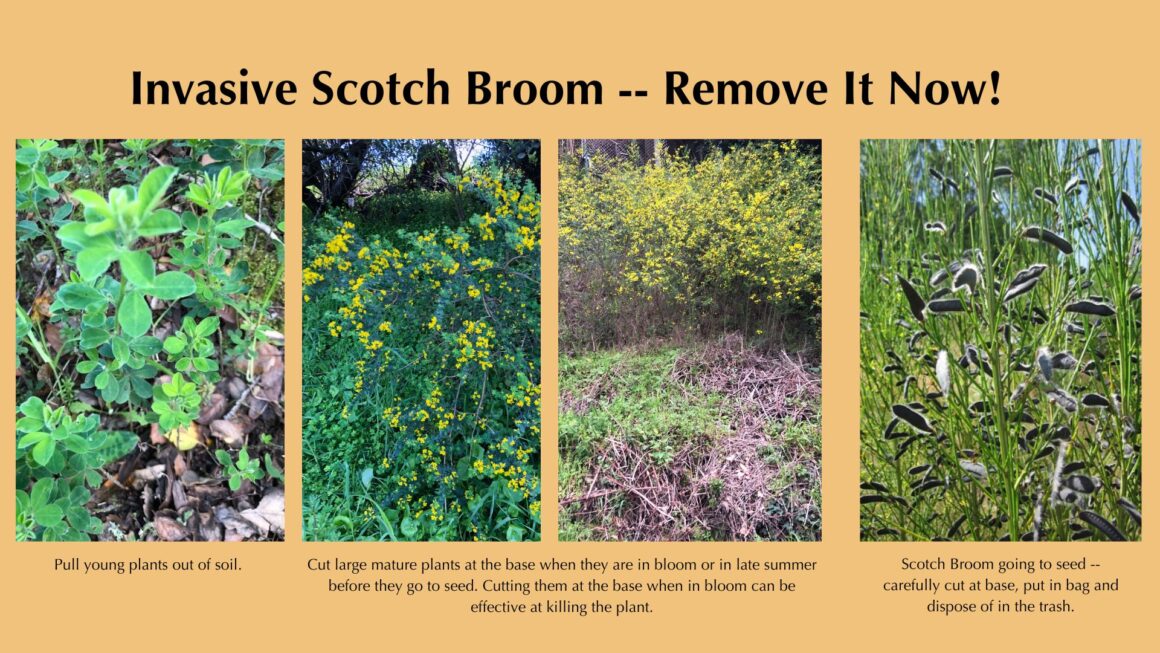Much like an unwelcome guest overstaying its welcome, Scotch broom aggressively displaces native flora, cultivating dense, suffocating monocultures that disrupt the delicate balance of our natural environment. Its rapid growth and prolific seed dispersal only compound the issue, swiftly colonizing roadsides and forests while encroaching upon vital habitat spaces. Adding to its rap sheet, Scotch broom exhibits a dangerous affinity for fire, igniting even the smallest spark into a raging inferno, particularly in arid, sun-drenched locales.
So, what’s the game plan? It’s time for all of us to roll up our sleeves and tackle Scotch Broom on our properties. For small plants, it’s best to pull them out now while the soil is moist. As for larger specimens, cutting them at the base is the way to go. It’s especially crucial to act now if the Scotch Broom is in bloom, as once it is done flowering, it will unleash a torrent of seeds, each capable of perpetuating its invasion for up to 60 years. Remember, you’ve got about two to three years before a small plant matures and becomes seed-bearing, so if you can’t get to all of them this year, there’s still time to tackle them next year. The key is to prioritize those in bloom.
If your Scotch Broom infestation lies on a slope, take heed: proper measures for slope stabilization are necessary before removal. Consult resources like the Marin Master Gardener website for erosion control guidance. It’s recommended to replace Scotch Broom with California Native slope stabilizers such as eriogonum (California buckwheat), arctostaphylos (manzanita), rhamnus (coffeeberry), and ceanothus (California lilac).
For further insights into the detrimental impacts of Scotch Broom on our local ecosystem and native flora and fauna, check out this informative video: https://www.youtube.com/watch?v=FxyqgRqBhQI.



Leave a Reply